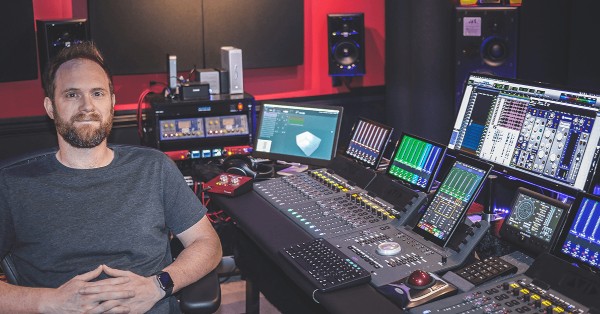Rob Burrell’s Chooses Red Interface For Dolby Atmos Mix Room
Multi-GRAMMY®-winning professional mix engineer Rob Burrell, based in the Nashville area, has worked with artists including Carrie Underwood, Little Big Town, Michael W. Smith, Michael McDonald and many more, as well as having multiple credits in film and television. He is equally at home in recording, mixing, mastering and post-production, and in genres as wide-ranging as country, Christian rock, Latin music, hip-hop, film scoring and more. Recently, he converted a space in his already incredible home studio into a Dolby Atmos mix room, and among the key gear making his setup work is the Focusrite Red 16Line 64-In / 64-Out Thunderbolt and Pro Tools | HD compatible audio interface.


“I really needed the workflow to work for mixing, mastering and Atmos post," notes Burrell. “I had a big list of things that I wanted to hit in the most concise kind of package possible. And so enter the Red 16Line, which has rocked my world! I had high hopes for the Red 16Line, but generally I don't get too excited about gear anymore, because I've been there and done that with much of it. But this is different. First of all, I always talk about wanting the 'tech to melt away,' meaning that once a new bit of gear is integrated into your setup, it should feel like it's not there, and I get that here. But more than that, it has affected the sound in a positive way. It knocked me out, because once I was using the Red 16Line, I could hear things in my mixes that I was missing before. As a result, my mixes have been coming together more quickly, with more transparency for me and easier troubleshooting. I love the Red 16Line and highly recommend it."

On his philosophy of mixing day to day, he says, “If someone asks me if I'm more of an analogue or digital guy, I'm whatever it takes to make things great. Generally I work digitally all in the box now, but it varies from project to project. I can literally go from an orchestral record to a hip-hop song the next day, and a country song the day after that. I like the challenge, and I like to get my butt kicked a little bit by trying new things. So after mixing in 5.1 and 7.1 since the late 90's, it was a no-brainer to dive into Atmos, which is a very precise and technical process with a fantastically artistic canvas to paint with. It's such a deeply rewarding challenge. Recently I've been going back to material that I've mixed in the past and mixing it for Atmos, just as an exercise. It's really illuminating."
Additionally, Burrell makes time to work with independent artists on a shoestring budget and mentor up-and-coming talent. He remarks, “I was very fortunate to come up under some great mentors myself, so I've always wanted to pay that forward. A lot of younger musicians and engineers contact me for guidance, and I help where I can. When free time is tight, the way I'm able to do this almost daily is through something I call 'MixMentor Mastering'. They might not have the means to hire me or someone else on the pro level to mix a whole project, but what I can do is give them lots of guidance in tracking and mixing on their end. We'll listen to a mix, I'll give them some advice based on what I hear, and they revise it on their end, getting it much closer to a pro project before I touch it. Then we give them the best mastering job we can, and they're happier with the result than they would have been, and they've learned something about production in the process. It's a rewarding thing to do, and I'm glad I can offer some advice to the next generation. And more often than not, I learn something from them too – they're approaching record production with fresh ears and self-taught skills, and I'm constantly impressed and have to ask 'how'd you do that?' And that is what makes a great engineer period — listening, asking questions and always learning."
To hear more about Rob Burrell, check out his episode of the Focusrite Pro Podcast here
